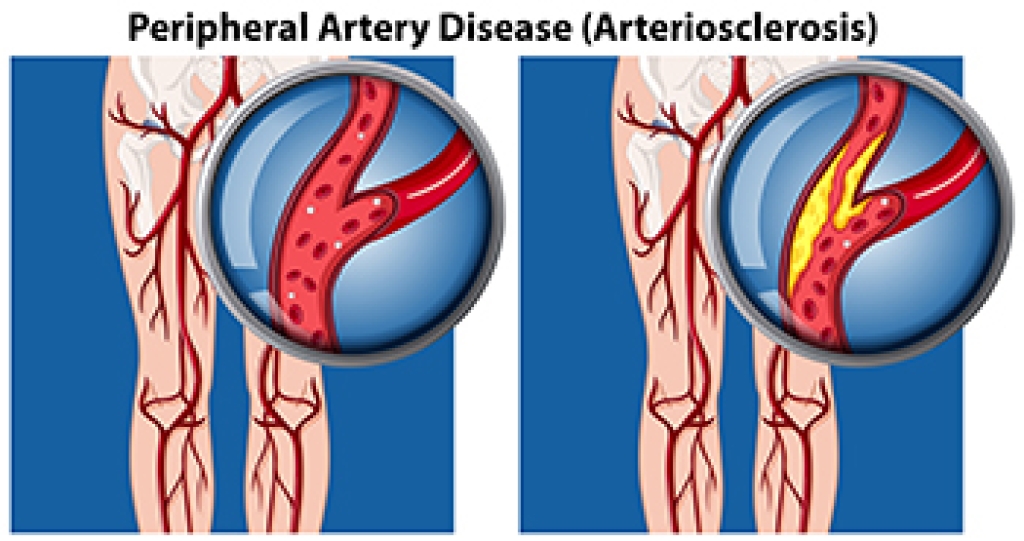
When the blood flow to the feet is slowed, it is typically the result of a buildup of fatty plaque in the arteries serving the lower extremities. This blockage is known as peripheral artery disease or PAD. Risk factors for peripheral artery disease include smoking, high blood pressure, high cholesterol, and aging. Telltale signs of PAD in the ankles and feet are sores or wounds that won’t heal, an absence of a pulse in the feet and toes, and cold or numb toes. One way to help prevent peripheral artery disease is to participate in physical exercise regularly. It is also imperative to stop smoking, because it not only increases the risk of PAD, it also makes any symptoms you may have worse. If you are predisposed to cholesterol or diabetes, they should also be monitored closely. If you need information on peripheral artery disease, it is a good idea to consult a chiropodist who can examine your feet and suggest appropriate treatment options.
Peripheral artery disease (PAD) is a serious condition that can increase your risk of having a stroke or heart attack. If you have symptoms of PAD, please consult with one of the chiropodists from The Footcare Centre. Our chiropodists will assess your condition and provide you with quality foot and ankle treatment.
What Is Peripheral Artery Disease?
Peripheral artery disease (PAD) is a condition in which the arteries that supply blood to the lower limbs narrow and harden due to a buildup of arterial plaque. PAD causes a reduction in blood flow to the legs and other extremities.
Symptoms
Often, people with PAD experience no symptoms, especially in the early stages. If PAD continues to worsen, the first sign of PAD may be claudication, pain and cramping in the legs while walking, caused by the reduction of blood supply to the muscles of the legs.
Other potential symptoms include:
- Numbness or weakness in the legs
- Coldness in the legs or feet
- Slow-healing sores or wounds
- Skin discoloration or hair loss on the legs
- Slow growth of toenails
Diagnosis
Most often chiropodists utilize a test called an ankle-brachial index (ABI). An ABI test compares blood pressure in your arm to the blood pressure in your ankle to see if any abnormality occurs. Vascular tests look at the blood flow in the legs and are generally painless and non-invasive.
Treatment
Lifestyle changes, such as eating a healthy diet and exercising regularly can help limit further arterial plaque buildup. Taking your prescribed medications can reduce your risk of stroke and heart attack. In some cases, surgery may be required to improve blood flow.
If you have any questions, please feel free to contact our office located in . We offer the newest diagnostic and treatment technologies for all your foot care needs.
